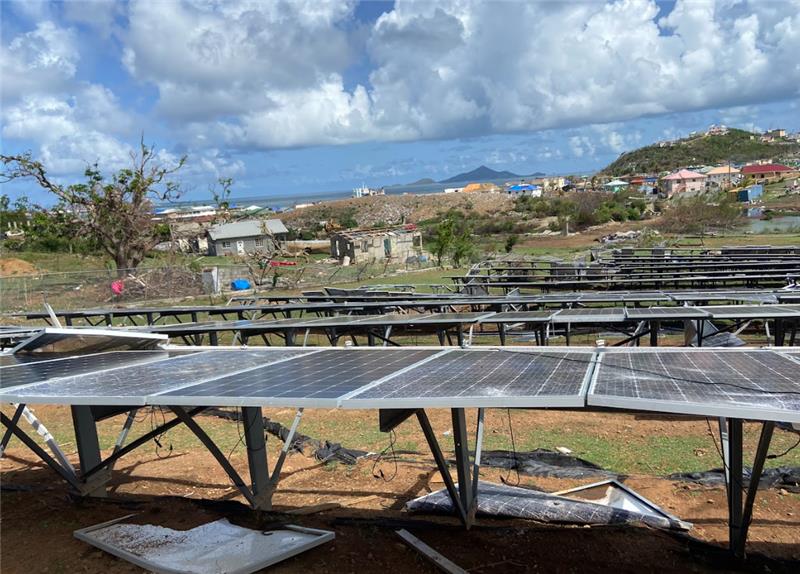The next chapter in designing hurricane-resilient PV systems in a world of increasing tropical storms.
Over the past decade, the Atlantic, Pacific, and Indian Oceans have endured a barrage of tropical cyclones. The 2020 North Atlantic season was the most active on historical record with 30 named storms, 11 of which made landfall in the continental United States. Last summer, in July 2024, the earliest category 5 hurricane to ever form in the North Atlantic, Hurricane Beryl, destroyed homes and infrastructure across Grenada and Saint Vincent and the Grenadines. And solar energy infrastructure didn’t escape the destruction.
Our team investigated three ground-mount solar installations in the path of the deadly hurricane. Our findings, published in Solar Under Storm III, is an update to our first Solar Under Storm report, published after the deadly hurricane season of 2017. Solar Under Storm III takes the learnings from Hurricane Beryl and provides a comprehensive update to Solar Under Storm specifications, best practices, checklists, industry codes, and recommended references based on evolution of the solar industry, advancements in technology, and additional seasons of experience and field investigation.
The growth of solar in hurricane-prone regions
As solar energy becomes central to the energy transition, its role in driving down energy costs, carbon emissions, expanding energy access, and bolstering energy security is unprecedented. With around 2.2 terawatts of solar capacity now installed globally and nearly a billion dollars invested daily in solar initiatives, solar power is reshaping the global energy landscape with extraordinary momentum.
Since 2004, solar has been the fastest-growing energy source globally, maintaining an average annual growth rate of 25 percent. The industry took nearly 70 years to reach 1 terawatt capacity, but only two more years to add the next terawatt, underscoring its incredible rapid ascent. Solar’s affordability and flexibility — ranging from tiny off-grid systems to enormous utility-scale installations — make it foundational for both decentralized and centralized solutions, as traditional energy systems are challenged technically and economically.
Yet, solar must be resilient to the climate threats it helps mitigate. Hundreds of gigawatts of solar installations are installed in the annual path of tropical cyclones, from Florida to the Philippines, highlighting an increasing vulnerability as the global solar market grows.
Our first Solar Under Storm report brought to light the reality of ground-mounted solar projects in hurricane-prone regions. This was followed by Solar Under Storm II, which focused exclusively on roof mounted PV systems, and then Solar Under Storm for Policymakers, a report sponsored by the United Nations, dedicated the non-technical audience that shoulders the responsibility for minimum standards and best practices for solar installations.
Solar Under Storm III is the next step forward to providing technical guidance to enhance solar system durability against Category 5 hurricanes, typhoons, and cyclones.
Resilient and reliable power for decades
The Solar Under Storm report series is designed to provide a free resource of the best practices in resilience for solar installations for designers, installers, suppliers, developers and policymakers. Our hope is that by sharing best practices and through continued collaboration, we can increase the reliability and survival rates of PV systems in hurricanes and ensure the resilience and reliability of power for local grids, homes, businesses, and critical facilities for decades to come.



